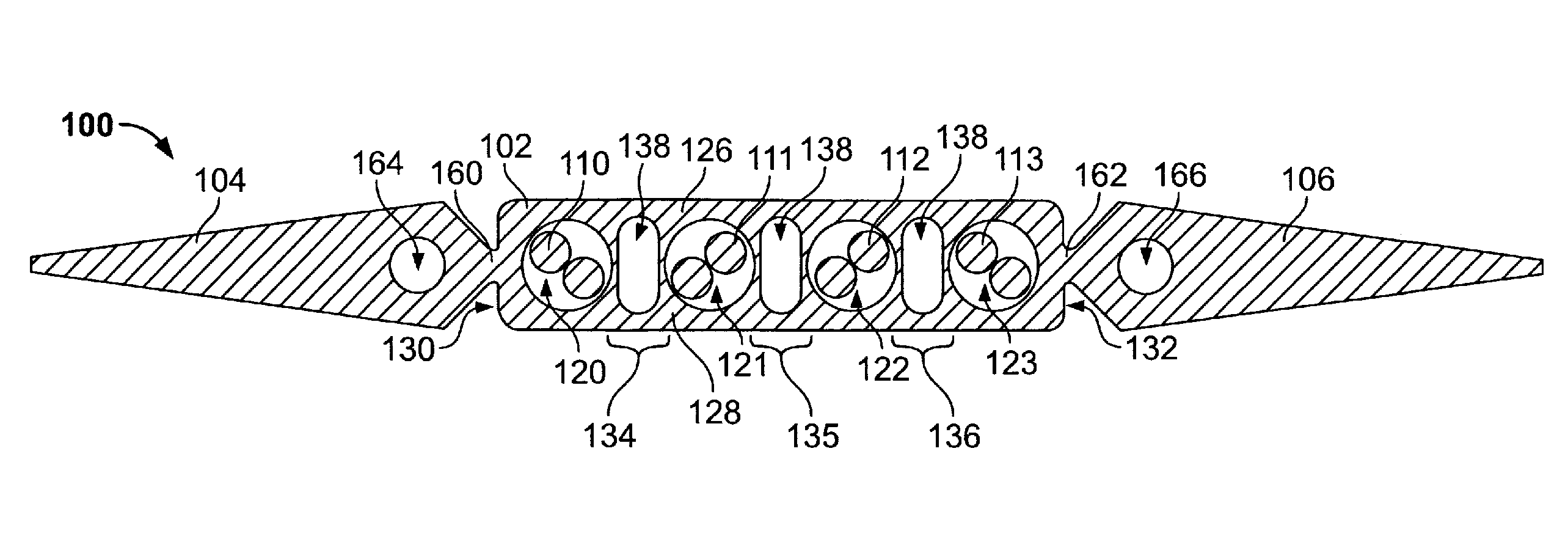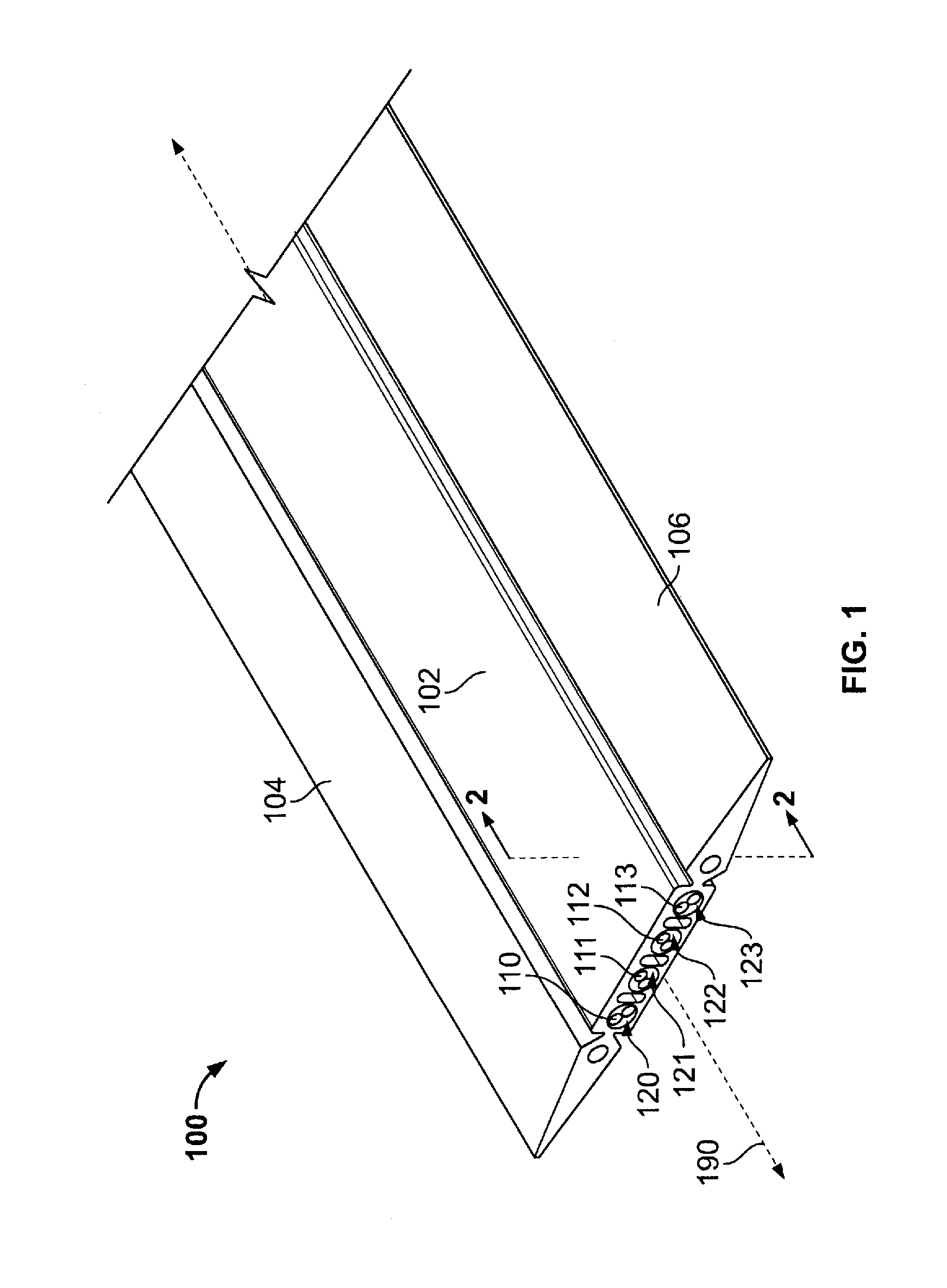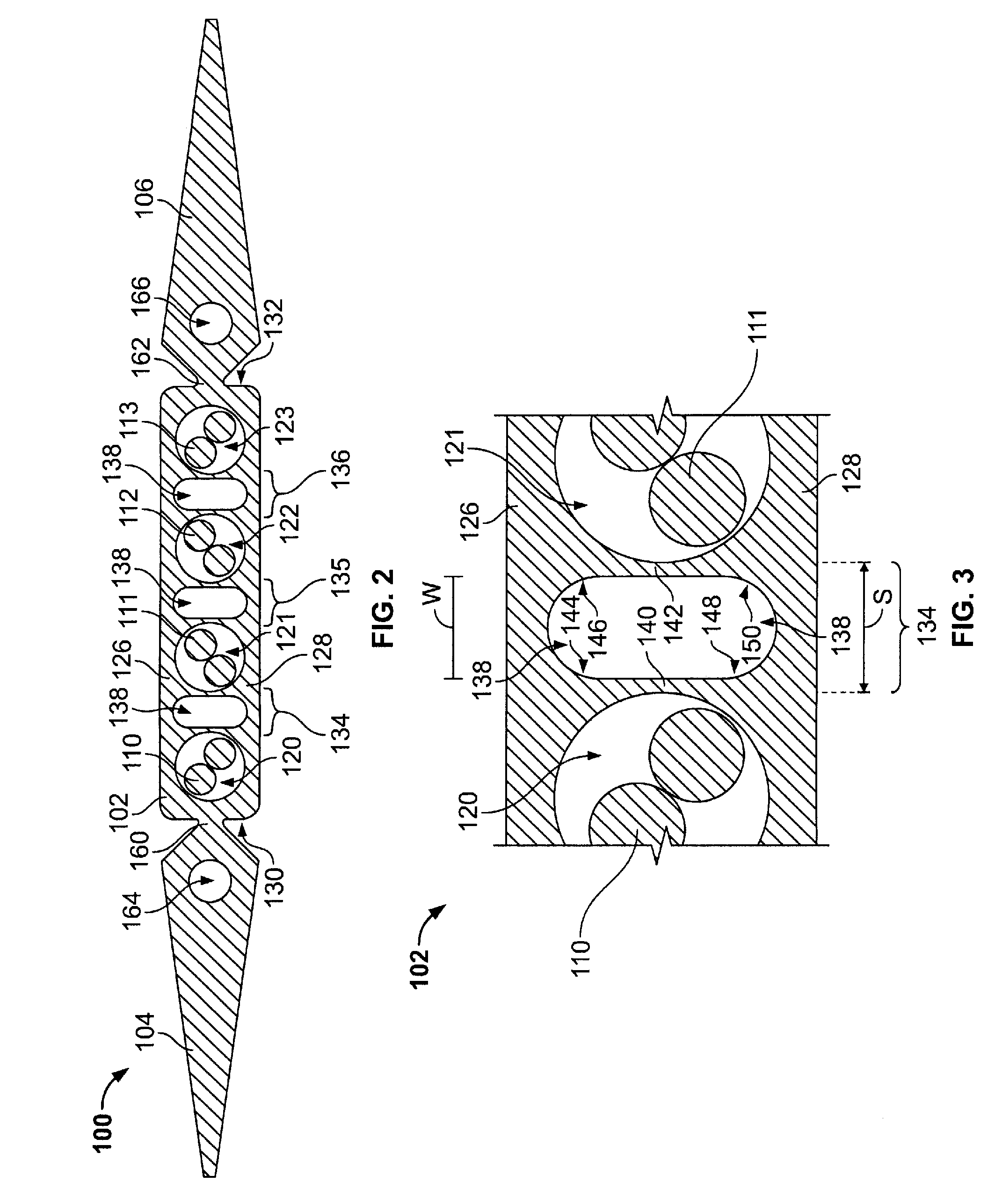Low-profile cable
- Summary
- Abstract
- Description
- Claims
- Application Information
AI Technical Summary
Benefits of technology
Problems solved by technology
Method used
Image
Examples
Embodiment Construction
[0016]FIG. 1 is a perspective view of a low-profile cable 100 formed in accordance with one embodiment. The cable 100 may be integrally formed from a dielectric material, such as polyvinyl chloride (PVC), during an extrusion process. The cable 100 may also be formed to include an elongated body 102 having a substantially rectangular cross section that extends lengthwise along a longitudinal axis 190. Alternatively, the body 102 may have other cross-sectional shapes, such as a rounded top or a substantially semi-circle shape. The body 102 includes a plurality of conductor passages 120-123 that are each configured to hole one or more conductors, which are illustrated in FIG. 1 as twisted pairs of conductors 110-113, respectively. Also, the cable 100 may include wing members 104 and 106 that project laterally outward from the body 102. The cable 100 shown in FIG. 1 may be used to transmit high speed electronic signals in a computer network, e.g., Ethernet, in areas or locations that re...
PUM
 Login to View More
Login to View More Abstract
Description
Claims
Application Information
 Login to View More
Login to View More - R&D
- Intellectual Property
- Life Sciences
- Materials
- Tech Scout
- Unparalleled Data Quality
- Higher Quality Content
- 60% Fewer Hallucinations
Browse by: Latest US Patents, China's latest patents, Technical Efficacy Thesaurus, Application Domain, Technology Topic, Popular Technical Reports.
© 2025 PatSnap. All rights reserved.Legal|Privacy policy|Modern Slavery Act Transparency Statement|Sitemap|About US| Contact US: help@patsnap.com



